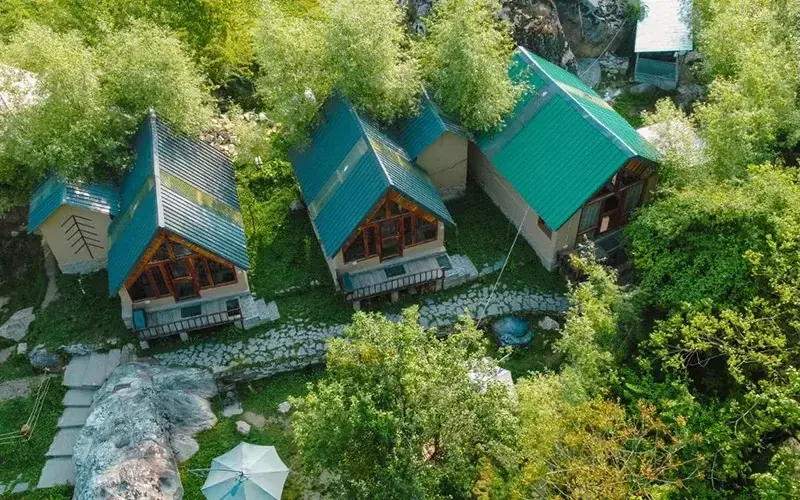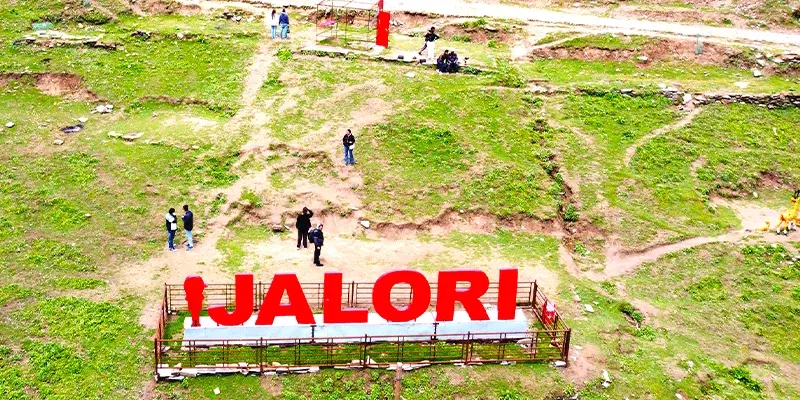

.webp)
Tucked away in the Banjar Valley of Himachal Pradesh, Jibhi was once just a whisper among shepherds and seasonal travelers. Its name comes from the local word meaning “whisper” or “murmur”—a nod to the sound of the river that winds through this pine-cloaked valley. For decades, Jibhi was known only to the native Himachali tribes who built charming wooden homes (called Kath-Kuni) and practiced apple farming, trout fishing, and slow living.
Until the late 1990s, Jibhi didn’t appear on the touris ...

Hotels In Jibhi
Stay close to rivers, forests, and peaceful mountain views.

Places To Visit In Jibhi
Top places to visit in Jibhi, naturally beautiful.

Images Of Jibhi
Experience Jibhi’s calm forests and rivers through stunning photos
Hotels In Jibhi
Places To Visit In Jibhi
Images Of Jibhi
.webp)

Tucked away in the Banjar Valley of Himachal Pradesh, Jibhi was once just a whisper among shepherds and seasonal travelers. Its name comes from the local word meaning “whisper” or “murmur”—a nod to the sound of the river that winds through this pine-cloaked valley. For decades, Jibhi was known only to the native Himachali tribes who built charming wooden homes (called Kath-Kuni) and practiced apple farming, trout fishing, and slow living.
Until the late 1990s, Jibhi didn’t appear on the tourist map. It was only in the early 2000s that a few offbeat travelers stumbled upon its silence—and chose to stay. Today, Jibhi is a mix of its proud past and a conscious, eco-loving present. Electricity and internet arrived late here, which only helped preserve its soul.
Secret Until the 2000s:
Jibhi remained largely unknown to mainstream tourists until just over two decades ago. It was a well-kept secret among backpackers.
Wooden Architecture Legacy:
Most houses and cottages in Jibhi are built using the traditional Kath-Kuni style—earthquake-resistant wooden architecture unique to Himachal.
Home to Rare Himalayan Trout:
Jibhi’s streams are stocked with rainbow and brown trout, making it a paradise for fishing enthusiasts.
Part of the GHNP Buffer Zone:
The village lies close to the Great Himalayan National Park, a UNESCO World Heritage Site known for its biodiversity and rare flora/fauna.
Locals Speak Seraji Dialect:
The regional language spoken here is Seraji, a dialect of Himachali that is both melodic and ancient.
Birdwatcher’s Paradise:
Jibhi hosts over 300 species of birds, including monals, woodpeckers, and flycatchers—making it a hotspot for birding.
Chehni Kothi is 1,500+ Years Old:
This ancient watchtower and temple stands tall without any iron or cement—made entirely of stone and wood.
Serolsar Lake Is Self-Cleaning:
Local legends claim that birds keep Serolsar Lake clean by removing every single leaf that falls in. Visitors say it always looks pristine.
Eco-Lovers’ Destination:
Many homestays and cottages in Jibhi run on solar power, serve organic food, and promote plastic-free tourism.
Minimal Cell Network – Maximum Peace:
In many areas of Jibhi, the mobile signal is weak. Ironically, that’s what makes it the perfect digital detox zone.